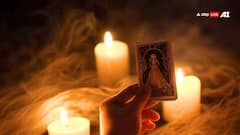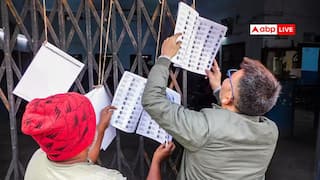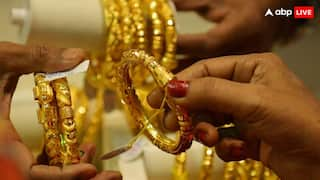What Is Pran Pratishtha? Why Faces Of Idols Are Kept Covered Before Consecration
Pran Pratishtha, which marks unveiling of the face of the deity idol, is often accompanied by a surge of devotion and emotional intensity, as is being witnessed in the case of Ram Lalla consecration.

New Delhi: The photographs of Ram Lalla idol to be placed in the sanctum sanctorum of Ram Mandir in Ayodhya, the consecration, or "pran pratishtha", of which is scheduled to be held on January 22, went viral on social media Friday. While the images created a lot of enthusiasm among the people, several devotees also questioned why the photo of the idol with an uncovered face was allowed to be seen by the public, an act prohibited in Hindu religion. In fact, Acharya Satyendra Das, the chief priest of Shri Ram Janmabhoomi Teerth Kshetra, has demanded an investigation into the matter.
Out of the two images in circulation, one depicts an idol made in black stone with its eyes veiled. The other has its face exposed.
"The eyes of Lord Ram's idol cannot be revealed before Pran Pratishtha is completed. The idol where the eyes of Lord Ram can be seen is not the real idol. If the eyes can be seen, an investigation should be done on who revealed the eyes and how the pictures of the idol are going viral," Das was quoted as saying.
ALSO READ | All 4 Shankaracharyas To Skip Ram Temple Inauguration. Here's Why
What Is Pran Pratishtha?
Simply put, "pran pratishtha" is a term from Hindu religious practices associated with the consecration of deities and idols before they are worshipped. The phrase can be broken down into two Sanskrit words — "pran" meaning "life" or "life force", and "pratishtha" meaning "to establish" or "to install". Thus, "pran pratishtha" refers to the ritualistic process of infusing life into a deity's idol or image.
This process is a key part of establishing a new temple or shrine, or when a new idol is installed at any place of worship.
It involves a series of elaborate rituals performed by priests to invoke the deity's presence into the idol. It is believed that the idol, which is otherwise just a physical object, becomes a living embodiment of the deity only after the pran pratishtha ritual is performed with chanting of mantras, offerings of flowers, incense, food, and the performance of specific Vedic rituals.
Why Are Faces Of Idols Kept Covered Before Pran Pratishtha?
In Hinduism, the faces of idols are kept covered before the pran pratishtha ritual is performed, and there are specific religious and spiritual reasons for this practice.
Prior to pran pratishtha, the idol is considered a mere physical object and not yet the embodiment of the deity. It is believed that covering the face helps maintain the sanctity and purity of the idol until it is ritually infused with the divine spirit. This also serves as a symbolic gesture of waiting for the divine presence to be invoked in the idol.
In Hindu philosophy, it is believed, the transition from the unmanifest aspect of the divine to the manifest form is a significant concept. Keeping the idol covered symbolises the unmanifest state. The pran pratishtha ritual, with which the idol's face is unveiled, symbolises the transition to the manifest form of the deity.
During the Durga Puja, for example, the actual festivities begin on Mahashasthi, the sixth day of Devipaksha — the lunar fortnight that begins after Mahalaya that marks the end of Pitripaksha — when the face of the Devi idol is unveiled. This takes place during a ritual called 'Bodhon' that is marked with a ceremonial puja.
The covering of the idol's face builds anticipation among the devotees, creating a sense of eagerness and respect for the moment when the deity will be 'revealed' and the divine presence will be established. The ritual is often accompanied by a surge of devotion and emotional intensity from the worshippers, as is being witnessed in the case of Ram Lalla consecration at Ayodhya.


































